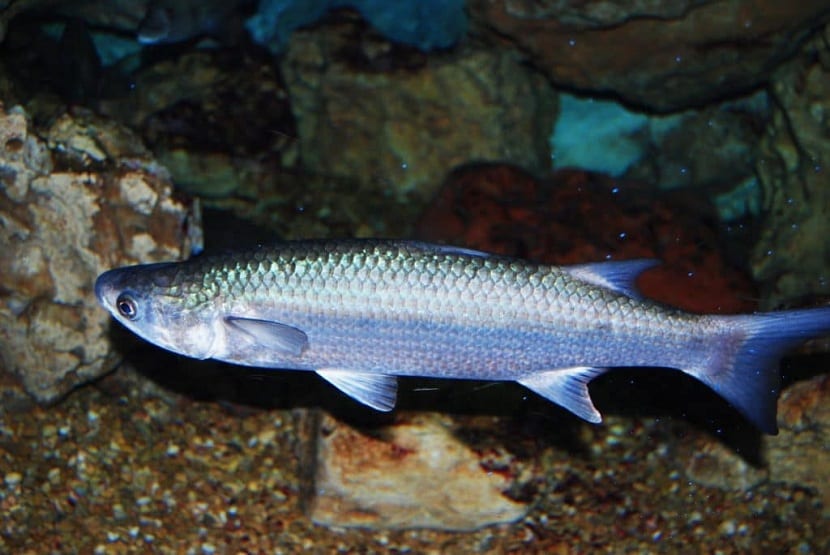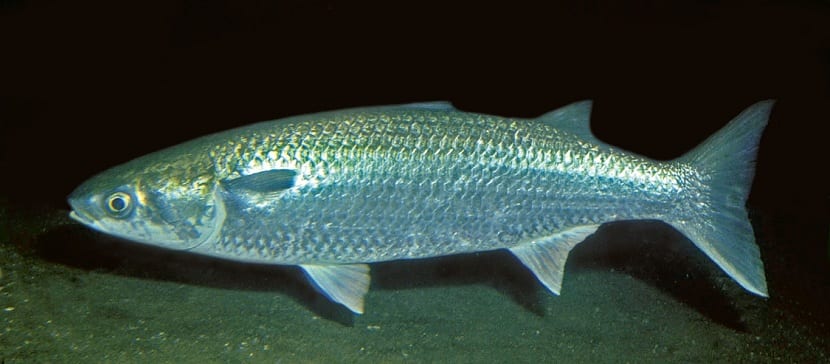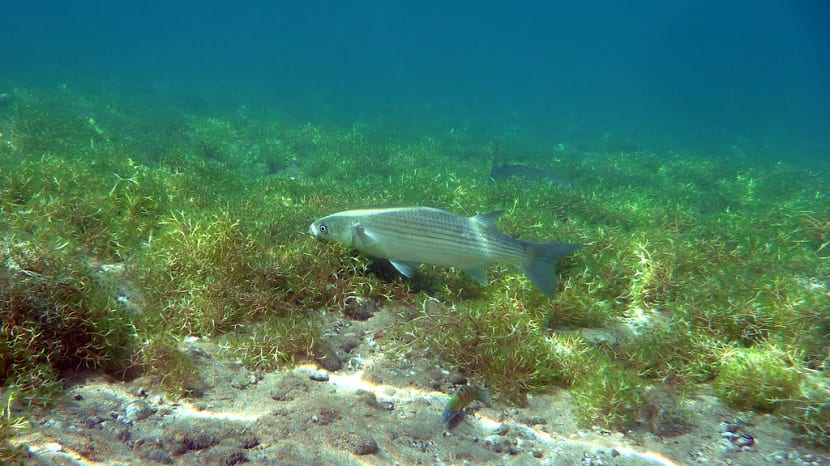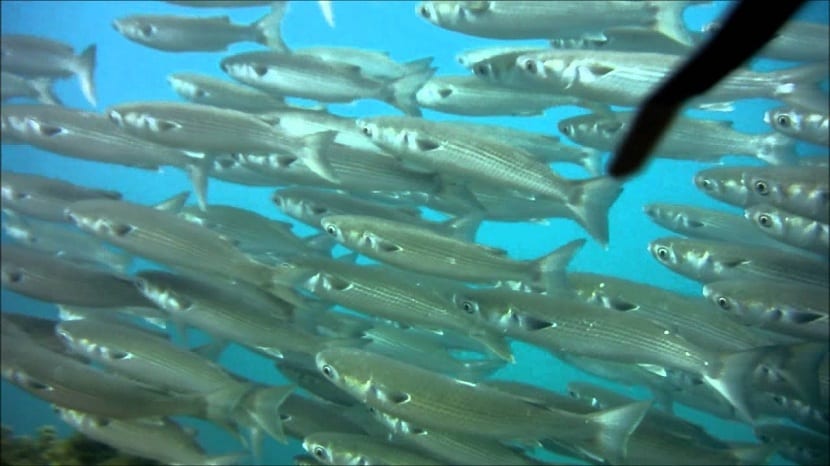
One of the fish that can be found most in all the world's oceans is the mullet fish. Its species has spread enormously and, therefore, depending on the area where it is spotted, it may have different common names, apart from the mullet fish. It is known by names like mujol, muble, mule or mugil. Its scientific name is mugil cephalus. Belongs to the group de peces teleosts and the order muljiforms.
In this post we are going to explain the characteristics, way of life and reproduction of the mullet fish. Do you want to know more about it? Do not miss it!
Key features

This fish has a very high capacity to withstand high levels of salinity. This is called being a euryhaline and eurythmus fish. The second thing is that it can withstand different temperature ranges. Normally, all fish can remain healthy in a different range of temperatures. However, the mullet fish supports great variety. This capacity becomes a decisive factor in its proliferation throughout the world and is the main cause of its expansion throughout the globe.
It is not a species that needs many demanding conditions, so its survival success is quite high.. It can live in waters that go from 4,5 degrees to others that are in 37 degrees. This high temperature range allows it to be very versatile when adapting to different environments. Salinity also has a fairly high range. It can live in salinities ranging from 0 to 45 ups.
The ability to adapt to different environments and depths has to do with the size of the specimen. Smooth fish sizes less than or equal to 7 centimeters tend to live longer in fresh water. Although they can live in fresh water, it is not the most ideal habitat to reproduce and grow in it.
It has a fairly elongated body and has two dorsal fins, a pectoral fin and a tail fin. The fins have a very small size if we compare it with the total of the body. It has various scales and its mouth is neither large nor pronounced like other species. Its teeth are very small in size and it has no filaments.
Size and weight

We find specimens that they have a size that goes between 30 and 60 centimeters. Depending on each species, we will find different proportions. Truly exceptional specimens with a size of 120 centimeters have been found. They usually grow between 3,9 and 6,4 cm a year. Females grow faster than males. Both in summer and spring they experience a more pronounced growth because the temperatures are higher and the food is more abundant.
As for weight, the most normal thing is that they are in a range of between 1,5 kg for the smallest or developing specimens and 8 kg, the largest and that have reached maturity.
The base color is grayish and has a tendency to white. The discoloration appears in descending form and the dorsal area is the darkest part of the whole body. It is capable of reaching between 4 and 16 years of age, depending on numerous factors. It can also be kept in captivity, although as is normal, the life expectancy is shorter.
Habitat and area of distribution

Being able to adapt to almost any condition in the aquatic environment, its range is enormous. It is able to keep living in both freshwater and marine ecosystems. It is considered a cosmopolitan species, as it can be in many different places.
Where most frequent we will be able to find the mullet fish in the seas of tropical and subtropical waters. The place where the fish will decide to live will be determined by some aspects that are important to them. The first thing is that you can have enough space with reefs and abundant vegetation. The second is that it needs a shore to inhabit. They are normally found in depths of 120 meters and this is how they can navigate to shallow waters.
Regarding its habitat, we have said that it is widely distributed throughout the world and in places near shores and abundant vegetation. We highlight the specimens de peces Lisa who live in Spain. We can see it in Catalonia, Valencia and Murcia, among other communities.
Smooth fish feeding and reproduction

Among the diet of these mugs we can see different varied options. It is an omnivorous species, so he eats everything. The main source of food is organic waste and materials that are floating in the water or on the seabed. He is always aware of what can be found on the seabed deposited on the substrate. Moss that forms on the seabed can also be eaten.
In general, the most abundant food in your diet is:
- Seaweed, such as red algae or green algae.
- Various crustaceans.
- Nematodes and other annelid species.
- Zooplankton.
Among this variety, the mullet is the one that moves the most.
Now we move on to the reproduction. This process is summarized in a great transit through the new offspring. Spawning is a longer period than normal, compared to other species, due to the fact that they have to find the ideal place for them.
They consider that the best place is the one farthest from the hustle and bustle and where a certain safety for the eggs can be guaranteed. The mujiles reproduce in two seasons a year. The first takes place in autumn and another in winter. They reach their sexual maturity at 3 years of age or when they reach a length of 20 centimeters. Not all fish have the same maturation capacity. Some are 40 cm long and are not yet active to reproduce.
They lay 0,5 to 2 million eggs for each female, however many of them do not survive. Eggs take only 2 days to hatch. The larvae stay close to the bed where the eggs have hatched and feed on the debris near the substrate as they grow and develop.
I hope that with this information you can learn more about the mullet fish.
Hello Germán, thank you very much for your information.
very detailed and interesting.
it is a tremendous contribution.
regards
Thank you very much, very complete, very well documented, congratulations
I have a video taken on the dock of my house in Florida, an impressive bank of mullet
20/25 cm
Hello. If I'm not mistaken, here in Brazil we call it Tainha. Do you know if this information is correct?
Greetings thanks for the information.
Wow but that good information with specific details, thank you very much and greetings
Hello, I caught two chikitas lists and I have them in a large fish tank with other local fish but I don't know what to feed them